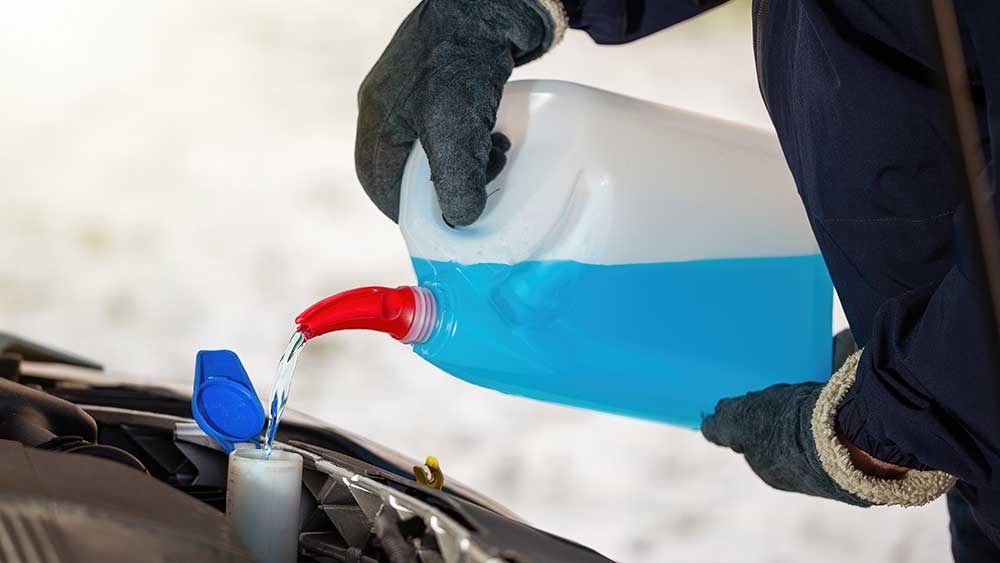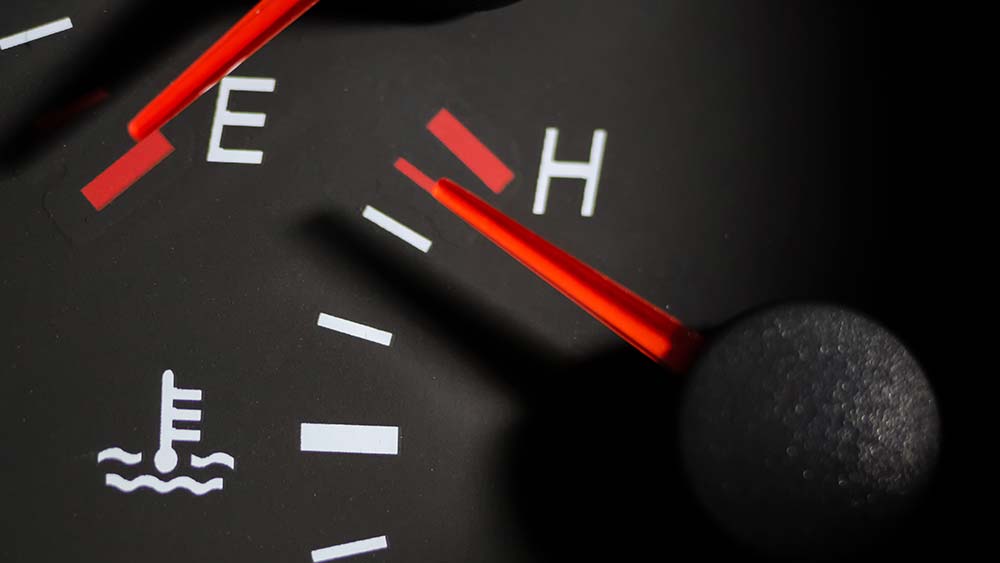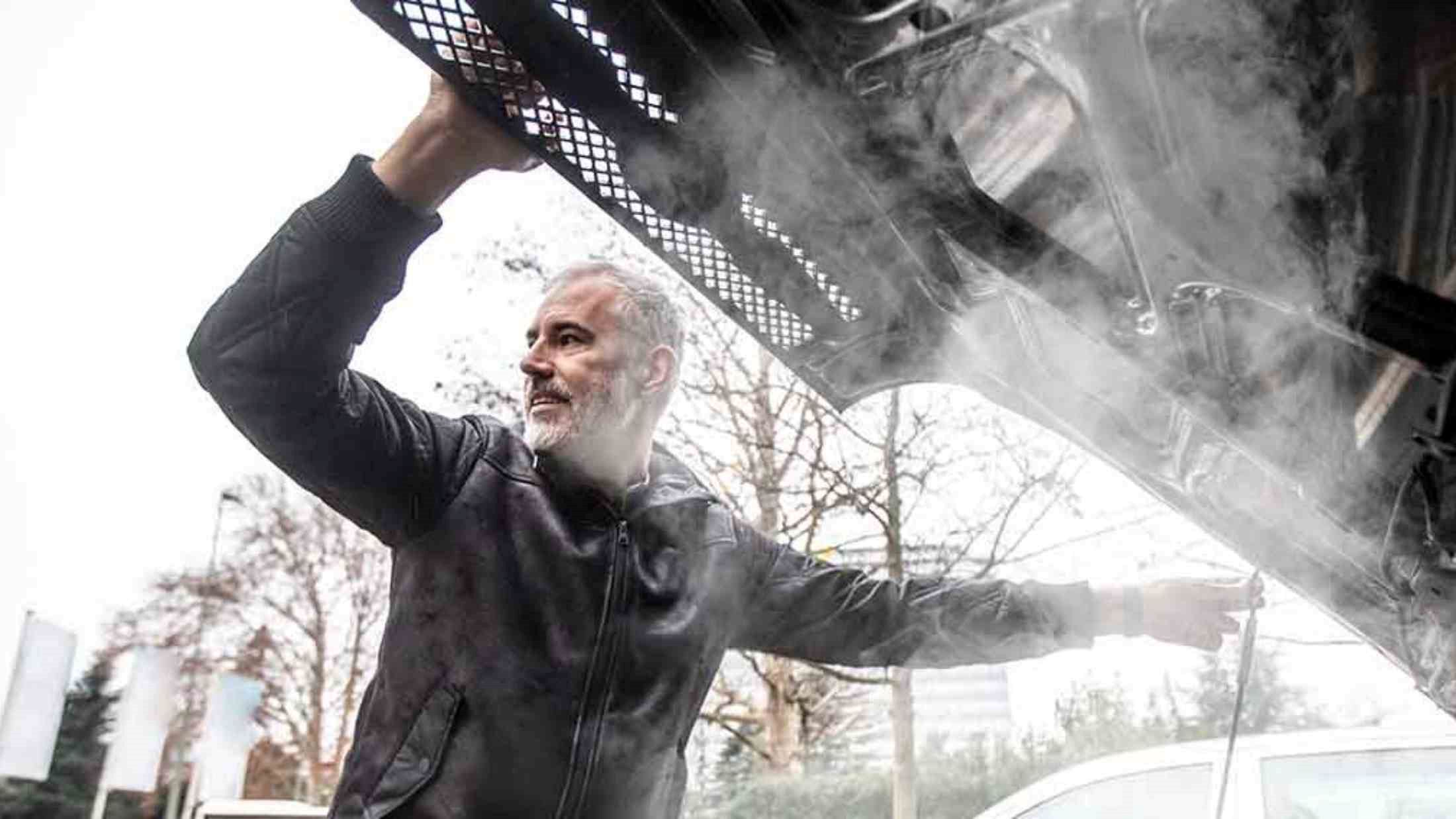Most of us have been there. You’re driving along nicely when - to your horror - steam starts pouring from under the bonnet.
You check the temperature gauge.
It’s in the red. Aaargh!
What do you do?
Stay safe and call for help
Our best advice is to pull in somewhere safe, away from moving traffic, and call your breakdown service.
They’ll be able to diagnose whether the problem is something serious, or an easy-fix. As the vast majority of call-outs for overheating cars are caused by drivers forgetting to top up their coolant!
There’s a common misconception that coolant is only needed in the summer, but that’s not true. Your car needs coolant throughout the year to ensure the engine runs smoothly.
And you do allow your car to overheat you could seriously the engine, not to mention your bank balance. A cracked engine block isn’t beyond repair, but it is very expensive.

How to avoid overheating
It’s always a good idea to make a habit of checking your coolant. Here’s how:
- Open the bonnet from the lever inside the car.
- If the engine’s hot, leave the engine to cool down for half an hour or so. This takes patience but there’s a very real risk you’ll burn yourself if you don’t.
- The reservoir should be easy to spot as it’s generally made of opaque plastic (unlike the metal oil reservoir). If you’re unsure, check your car manual or ask a friendly mechanic. Pouring coolant into the oil tank is one mistake you don’t want to make.
- If it’s empty (below the MIN marker) check for signs it’s leaking (coolant is often coloured red, green, blue or pink so it’s easy to spot as a puddle will form under the car).
- If it’s low simply top up the reservoir with pre-mixed coolant, or warm water mixed with antifreeze (split about 50/50).
- The water must be distilled (not tap water).
- If the coolant is sitting happily between the MIN and MAX markers, then you probably have a more serious engine problem.
What’s the difference between the coolant reservoir and the radiator?
It’s very easy to get confused between the two, so here’s a quick and easy explanation.
Basically, your car’s cooling system takes heat from the engine by pumping coolant through pipes surrounding your engine’s cylinders. The heat taken from the engine converts the coolant into a gas, which passes through the radiator. The radiator then converts the gas back into a liquid and expels the heat to the outside of the vehicle. Simple.
That’s why you need to add coolant to the coolant reservoir, and not the radiator. The reservoir feeds the radiator.
Though just to confuse you further, on older models, there’s no reservoir, just a radiator. If that’s an issue for you then do ask a mechanic for advice on what to do. And never pour cold water into a hot radiator as the laws of physics will kick in and you’ll damage the engine. Also, don’t attempt to unscrew the radiator cap if the engine is hot. It will spit hot water and steam and you could scald yourself.
More tips to keep your car cool
- Change your coolant – your garage should change it every 40,000 or miles or so
- Check for cracks and leaks – that means looking at the radiator and the coolant reservoir, as well as the pipes that feed them
- Service the car regularly –- don’t forget to take your car in for regular services, (and make sure they include oil and coolant changes according to the manufacturer’s guide)
- Spare coolant – keep some in the boot just in case you need a top up
- Check warning lights
- Watch out for white smoke in your exhaust – you may have an internal engine leak, forcing coolant into the cylinder
- Look out for a bubbling radiator – this can also be caused by cracks in the engine, head, or head gasket
- Check your radiator cap – a loose radiator cap can also lead to leaks so make sure it’s sealed tightly.
You could save yourself a lot of trouble simply by investing in a new cap.
Why else could my car be overheating?

Have a think about when your engine heats up, so you can explain the situation to your local garage. This will help them diagnose the problem.
Your engine overheats on short trips
Coolant issues aside, if your engine seems to overheat on short trips (say to the shops), the problem could be the drive belt, the electric cooling fan, the ignition, a vacuum leak, the thermostat, the head gasket, or indeed ‘an engine problem’
Your engine overheats on longer journeys
All the above still apply. But there are a few more problems you can add to the list; from a clogged radiator or engine block, to a faulty cooling fan, thermostat or fan belt.
Though, here are two problems that are easy to solve:
- the car is overloaded
- it’s being driven too hard.
A word of warning about coolant
Coolant is a mixture of distilled water and antifreeze, which is made up of ethylene glycol and propylene glycol, both dangerous chemicals.
They have a sweet taste, which is attractive to children and pets, so always keep coolant and antifreeze out of reach, and please clean up any spills, as even if you don’t have any pets, wildlife will lap it up.
If in doubt call AXA
If all this seems confusing, please remember, if you have AXA Breakdown Cover, recommended by Which?, and the car starts to overheat, you can relax knowing we’ll come to you, wherever you are. Our breakdown team are happy to help 24/7.
If we can’t fix the problem at the roadside we’ll arrange to have the car towed to one of our approved garages.
No matter how hot things get, we’re here to help you keep you get back to the good stuff.







